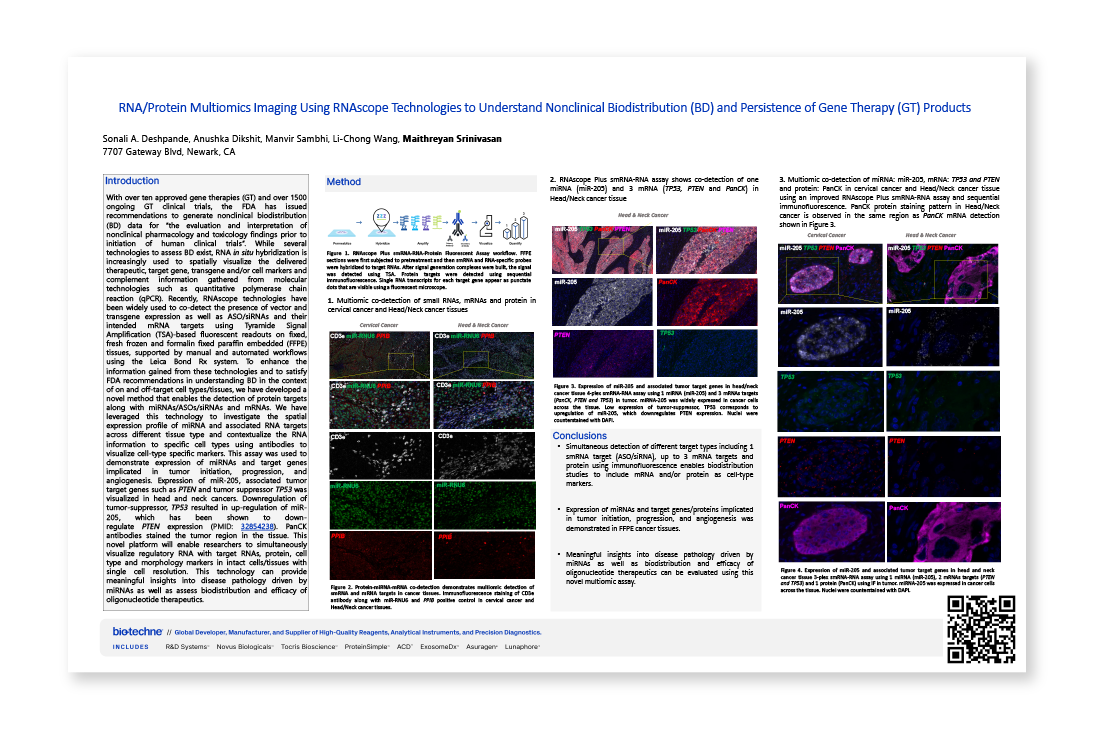RNA/Protein Multiomics Imaging Using RNAscope™ Technologies to Understand Nonclinical Biodistribution (BD) and Persistence of Gene Therapy (GT) Products
Scientific Meeting PostersWith over ten approved gene therapies (GT) and over 1500 ongoing GT clinical trials, the FDA has issued recommendations to generate nonclinical biodistribution (BD) data for “the evaluation and interpretation of nonclinical pharmacology and toxicology findings prior to initiation of human clinical trials”. While several technologies to assess BD exist, RNA in situ hybridization is increasingly used to spatially visualize the delivered therapeutic, target gene, transgene and/or cell markers and complement information gathered from molecular technologies such as quantitative polymerase chain reaction (qPCR).
Recently, RNAscope technologies have been widely used to co-detect the presence of vector and transgene expression as well as ASO/siRNAs and their intended mRNA targets using Tyramide Signal Amplification (TSA)-based fluorescent readouts on fixed, fresh frozen and formalin fixed paraffin embedded (FFPE) tissues, supported by manual and automated workflows using the Leica Bond Rx system.
To enhance the information gained from these technologies and to satisfy FDA recommendations in understanding BD in the context of on and off-target cell types/tissues, we have developed a novel method that enables the detection of protein targets along with miRNAs/ASOs/siRNAs and mRNAs. We have leveraged this technology to investigate the spatial expression profile of miRNA and associated RNA targets across different tissue type and contextualize the RNA information to specific cell types using antibodies to visualize cell-type specific markers.
This assay was used to demonstrate expression of miRNAs and target genes implicated in tumor initiation, progression, and angiogenesis. Expression of miR-205, associated tumor target genes such as PTEN and tumor suppressor TP53 was visualized in head and neck cancers. Downregulation of tumor-suppressor, TP53 resulted in up-regulation of miR-205, which has been shown to downregulate PTEN expression (PMID: 32854238). PanCK antibodies stained the tumor region in the tissue.
This novel platform will enable researchers to simultaneously visualize regulatory RNA with target RNAs, protein, cell type, and morphology markers in intact cells/tissues with single cell resolution. This technology can provide meaningful insights into disease pathology driven by miRNAs as well as assess biodistribution and efficacy of oligonucleotide therapeutics.
